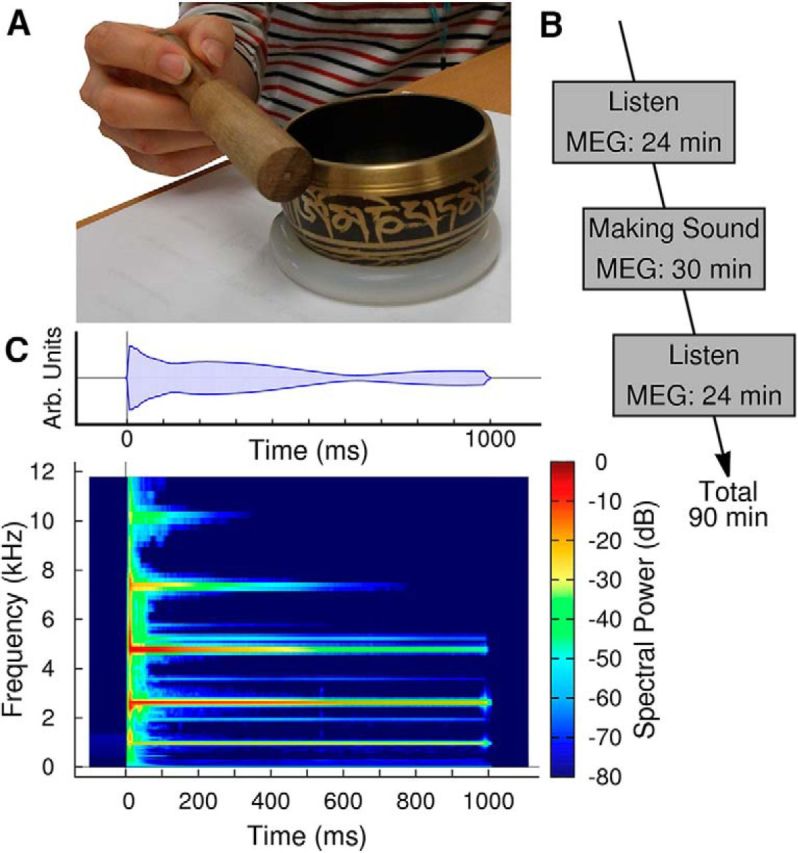Figure 1.

Experimental design and stimulation. A, Sounds were made by striking a Tibetan singing bowl with a wooden mallet. B, The experimental design consisted of three periods of MEG recording: first listening passively to recorded sounds, then making sounds, and then again passive listening. C, The spectrogram of the sound shows multiple modal frequencies. Interaction between spectral components results in a beating sound, which can be observed in the modulation of the amplitude (top). The recorded sounds were truncated at 1000 ms with a 25 ms cosine slope.
